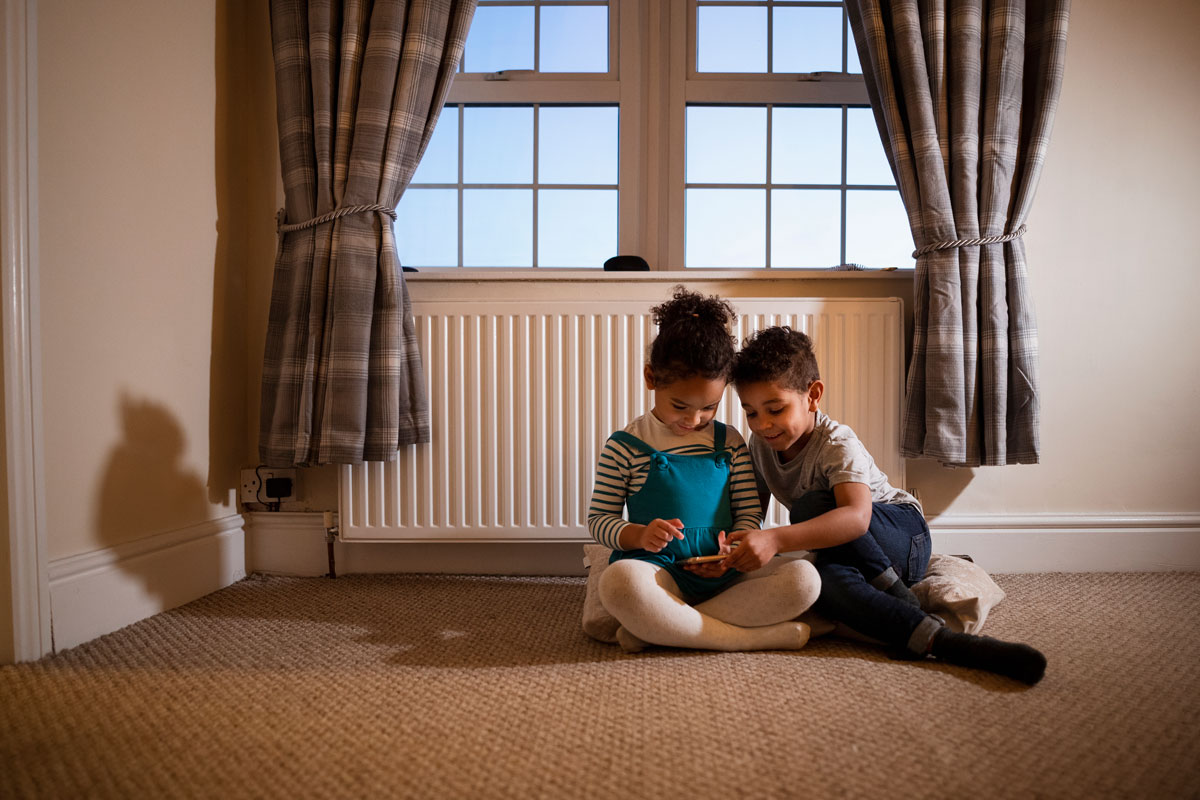1. Reduce fire risks caused by electric heating
Around 65% of Quebec households use electric heating[2]. If you were under the impression that this is the safest heating method, you’re mistaken! The fact is that electric heating units are the cause of more than 40% of household fires in Quebec[3]. To prevent your electric heating system from causing a fire, you need to remove as much dust as possible from the units before turning the system on for the first time in the fall. And if you notice a suspicious noise or unusual smell, don’t hesitate to have your system inspected by a professional. It’s always better to be safe than sorry when it comes to fire risks!

2. Reduce clutter in or around your baseboard heaters
Before starting your heating system for the winter, make sure that no objects are trapped in or around your radiators or baseboard heaters. Also, keep all objects such as furniture, toys, curtains or power cables at least 10 cm away from them. It’s best not to dry wet socks or mittens on these heaters because such items could melt or catch fire. For the same reason, don’t paint your baseboard heaters because the paint can crack and catch fire.
3. Be extra cautious with your space heaters
Space heaters are a simple solution for getting a little extra heat in very cold weather. To reduce the risk of short-circuits, plug the unit directly into an electrical outlet, and don’t use an extension cord. Always turn the unit off before going out. Also, keep it out of the reach of children and pets in order to reduce the risk of burns because some space heaters can become very hot.
4. Prevent fires caused by wood-burning
If you heat with wood, store the wood at least 1.5 m from the fireplace. When you empty the ashes, dump them into a metal container and place them outdoors and away from any flammable materials for at least 72 hours. And don’t forget that if you heat by wood, you need to notify your broker in order to have the proper coverage.
5. Clean your chimney regularly
You need to have your chimney swept clean by a professional every year. These specialists remove creosote, a tarry wood preservative that builds up inside chimneys and can cause fires. Chimney creosote currently accounts for around 8% of all household fires in Quebec.
6. Winterize your oil- or gas-heating system
As with wood heating, annual inspections and preventive maintenance are needed for oil- and gas-heating systems. Furnaces, fireplaces and water heaters must be maintained and inspected regularly. Make sure that air intakes and vents are clear of blockages in order to ensure adequate ventilation. Before turning on the heat in the fall, clean or change the ventilation filter; in winter, remove snow from the system’s outside components. Lastly, for the personal safety of everyone in your home, be sure to install carbon monoxide detectors!
7. Install the right number of smoke detectors
Every level in your home should be equipped with at least one smoke detector. To further reduce the risk of fire, check or replace your smoke detector batteries every time the clocks move forwards or backwards according to the season.
8. Keep a fire extinguisher in the home
Having a fire extinguisher in your home is highly recommended. Place the extinguisher where it’s easily accessible and be sure you can use it if you have to.
In a nutshell, prevention is key to fire safety with any kind of heating system!
[1] Ministère de la Sécurité publique du Québec, La sécurité incendie au Québec - Statistiques sur les incendies déclarés en 2015 (2018), p. 35. URL : https://www.securitepublique.gouv.qc.ca/fileadmin/Documents/securite_incendie/statistiques/statistiques-incendies-2015.pdf (in French)
[2] Chair in Energy Sector Management, HEC Montréal, État de l’énergie au Québec 2019, p. 40. URL : https://energie.hec.ca/wp-content/uploads/2018/12/EEQ2019_WEB.pdf (in French)
[3] Ministère de la Sécurité publique du Québec, La sécurité incendie au Québec - Statistiques sur les incendies déclarés en 2015 (2018), p. 37. URL : https://www.securitepublique.gouv.qc.ca/fileadmin/Documents/securite_incendie/statistiques/statistiques-incendies-2015.pdf (in French)
